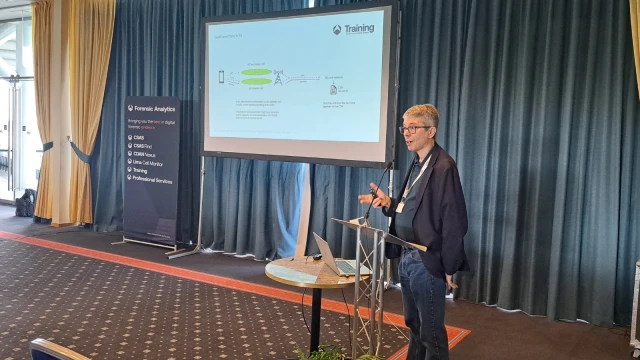Blog
Founder Joe Hoy’s Textbook Used as a Learned Treatise in the United States
A key highlight of Joe's career was writing the set textbook used for training police investigators and digital analysts in the UK and world-wide, including the FBI. In a recent development in the courts in the US, Joe’s textbook was accepted as a learned treatise.

In a United States district court last year, in a case concerned with prosecution of an organised crime group charged with racketeering, murder and gang-related crimes, much of the evidence used related to cell site technology. Amongst the evidence admitted was the Second Edition of Forensic Radio Survey Techniques for Cell Site Analysis, the textbook by Forensic Analytics founder Joe Hoy.
When a text written primarily and impartially for professionals is considered sufficiently authoritative in its field to be admissible as evidence, it is considered a “Learned Treatise.” Learned Treatises are essential evidence, assessed as having a high standard of accuracy. They are often used in cases where the evidence of expert witnesses requires reference material for cross-examination.
This development represents a significant milestone for the textbook, which has long been considered an essential reference on the subject of cell site analysis for police analysts, practitioners, technicians, investigators, and cell site experts, along with legal professionals and students/trainees in digital forensics.
Forensic Radio Survey Techniques for Cell Site Analysis provides an overview of the end-to-end process of planning, undertaking, and reporting of forensic radio surveying to support the forensic discipline of cell site analysis. It starts by recapping and explaining, in an accessible way, the theory, structure, and operation of cellular communications networks, then moves on to describe the techniques and devices employed to undertake forensic radio surveys.
Worked examples are used throughout to demonstrate the practical steps required to plan and undertake forensic radio surveys, including the methods used to analyze radio survey data and compile it into a court report. A summary section condenses the technical and practical elements of the book into a handy reference resource for busy practitioners.
The Second Edition is a substantial update to the first, with new material covering 5G New Radio networks and ‘6G and beyond,’ critical communications, mobile satellite communications, IoT networks, Cell Site Analysis Tools, and much more.
Other sample topics covered in Forensic Radio Survey Techniques for Cell Site Analysis include:
Radio theory, covering RF propagation, basic terminology, propagation modes, multipath transmission, and carrying information on a radio signal
Core networks, including 2G, 3G, 4G, and 5G, subscriber and device identifiers, and international and temporary mobile subscriber identities
Cell access control, covering cell barring, forbidden LAC/TAC, location updating, inter- and intra-carrier handovers, and 3GPP network types
Forensic radio surveys objectives, terminology, and types, along with location, static spot, and indoor surveys
You can buy Forensic Radio Survey Techniques for Cell Site Analysis here.